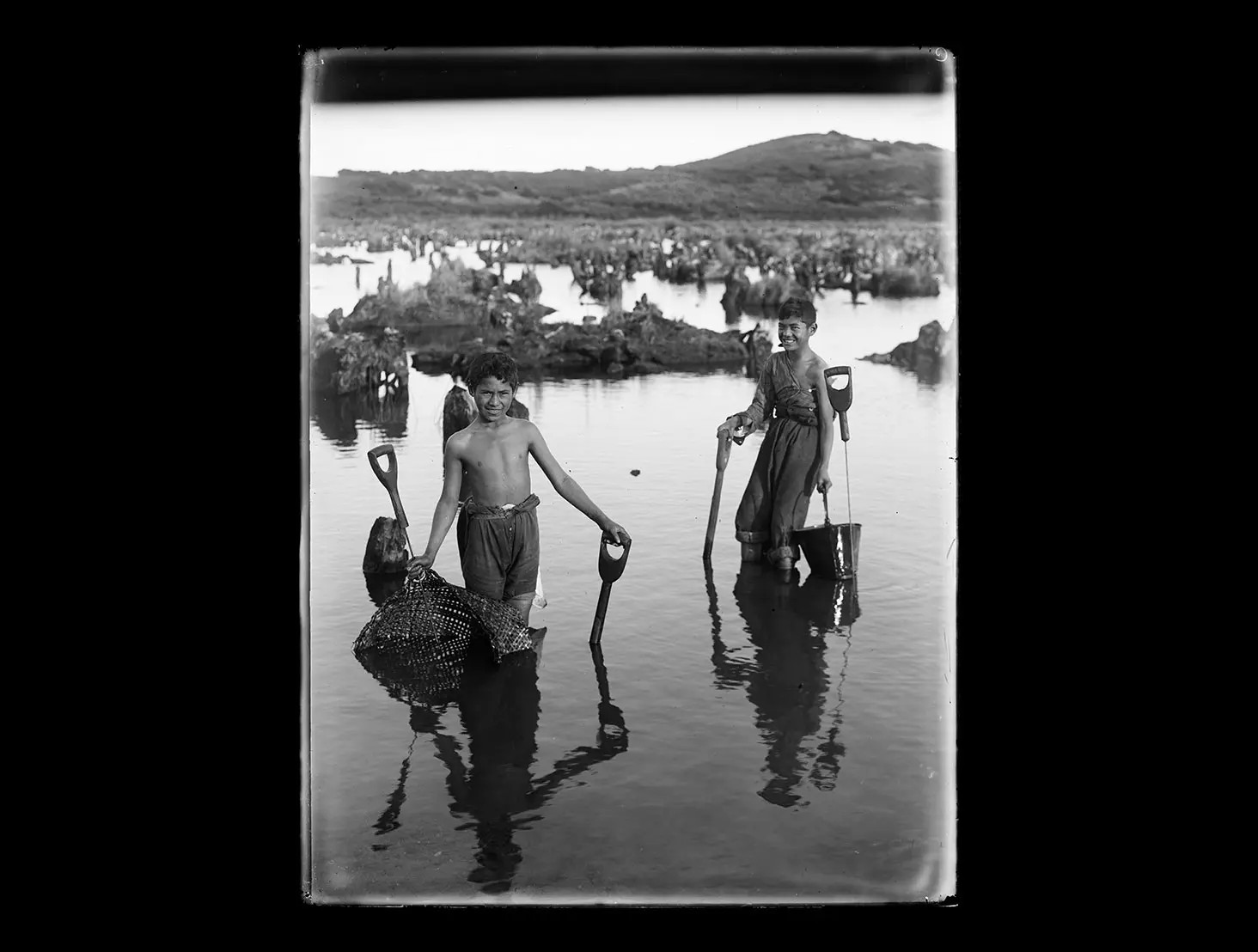Image credit: Children working in the gumfields, Te Tai Tokerau, 1910 attributed to Arthur James Northwood. Ref: 1/1-009779-G Alexander Turnbull Library.

Image credit: Children working in the gumfields, Te Tai Tokerau, 1910 attributed to Arthur James Northwood. Ref: 1/1-009779-G Alexander Turnbull Library.

Most of Aotearoa New Zealand’s gumdigging took place in the swamps of Te Tai Tokerau, Northland. It was hard work for the mainly Māori or Dalmatian gumdiggers. Find out more, and explore our collections and curated resources.
With cheerful smiles and gear at the ready, the boys in this photograph could be off for a day at the beach — but a closer look reveals a different scene altogether. In 1910, when this image was taken, these boys worked with their families, digging kauri gum out of the swamps of Te Tai Tokerau Northland. It was hard physical labour, in all seasons and weathers, often knee-deep in muddy water, using a spear with a long, narrow neck to probe the mud for chunks of gum and a special Skelton spade to dig the pieces out.
For decades, communities of Te Tai Tokerau whānau, along with many immigrants, mined the buried remnants of Northland’s ancient kauri forests for gum to sell for export. Among the immigrants were Dalmatians, from southeastern Croatia — ‘Ngā Tararā’ to their Māori neighbours, with whom some intermarried. This image from the Northwood Collection is part of a precious photographic record of these people and their way of life in the gumdigging industry.
Gumdiggers moved around frequently, looking for likely sites to find more gum. At each site, they made tents and whare out of any materials to hand-corrugated iron, sacking, mud, ponga logs and nīkau fronds. It was a basic and often harsh life. In 1898, Thomas Shore, a storekeeper and gum buyer at Hikurangi, told a royal commission of inquiry into the industry that ‘the life of a gum-digger is wretched, and one of the last a man would take to’.
Māori of Te Tai Tokerau traditionally used kauri gum for chewing and for medicinal purposes, as well as for fires and torches (it is quite flammable). The international trade in the gum took off in the 1840s when the resin was found to make a superior kind of varnish. It was exported to northern hemisphere countries and for decades was a major contributor to New Zealand’s economy.
Following the start of the First World War, a few years after this photo was taken, trade in kauri gum began to falter. Britain and Germany could no longer receive gum exports, and many young New Zealanders went off to fight. Perhaps the boys in this image were among those to enlist.
In the Second World War, the iwi connection with gumdigging was memorialised in the 28th (Māori) Battalion’s A Company, whose members were affiliated to iwi north of Auckland and whose nickname was Ngā Kiri Kapia (the Gumdiggers).
The Northwood Collection is an invaluable historical archive of northern New Zealand, recorded by the Northwood family of photographers — father Richard Arthur and sons Arthur, Richard Alfred and Charles. Arthur, who took most of the photographs in the collection, operated a studio in Kaitaia from 1909 until his death in 1949.
Story written by: Lisa Allcott
Copyright: Turnbull Endowment Trust
From 1850 to 1900 kauri gum was Auckland’s leading overseas export. Despite the introduction of compulsory primary education in 1877, children often worked in the gumfields to help support their whānau and contribute to the national economy.
Explore the Alexander Turnbull Library collections further: Kauri gum.
Topic Explorer has Mining in New Zealand.
Want to share, print or reuse one of our images? Read the guidelines for reusing Alexander Turnbull Library images.
Tikanga ā-iwi:
Te whakaritenga pāpori me te ahurea
Te ao hurihuri
Te wāhi me te taiao
Ngā mahinga ohaoha.
Te Takanga o Te Wā (ngā hītori o Aotearoa):
Tūrangawaewae
Whanaungatanga.
Social sciences concepts:
Identity, culture, and organisation
Place and environment
Continuity and change
The economic world.
Aotearoa New Zealand’s histories:
Māori history is continuous
Colonisation and its consequences
The exercise of power
Relationships and connections between people.